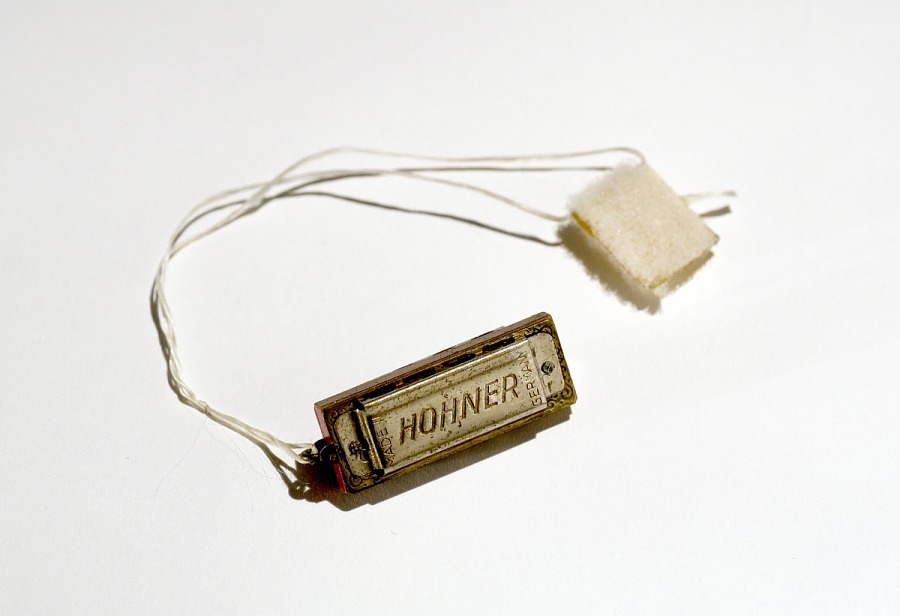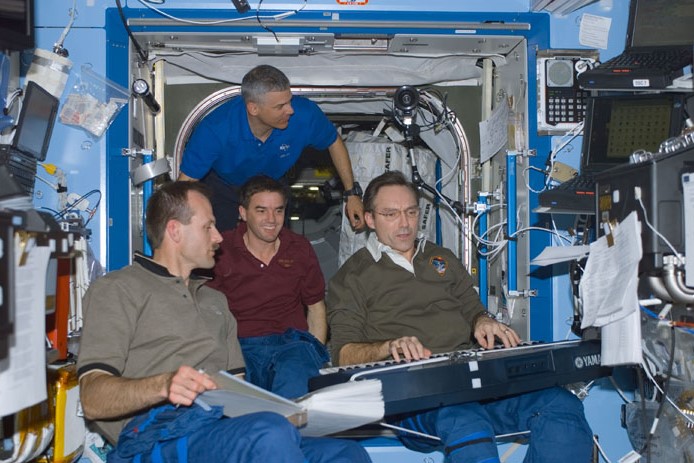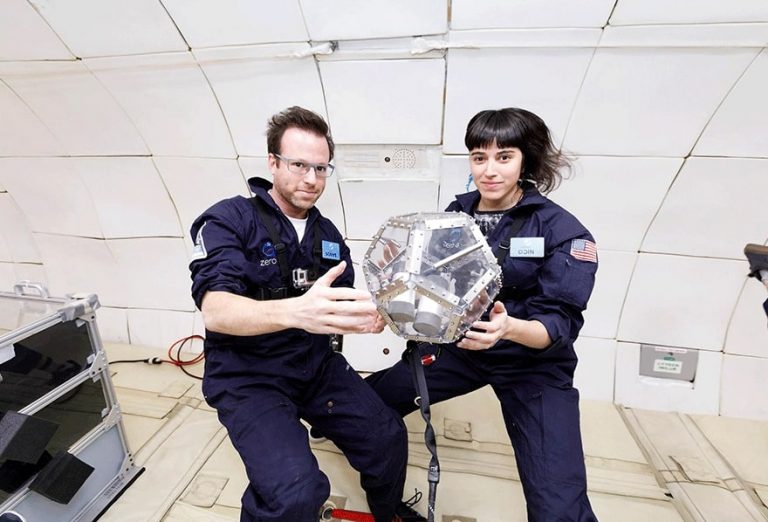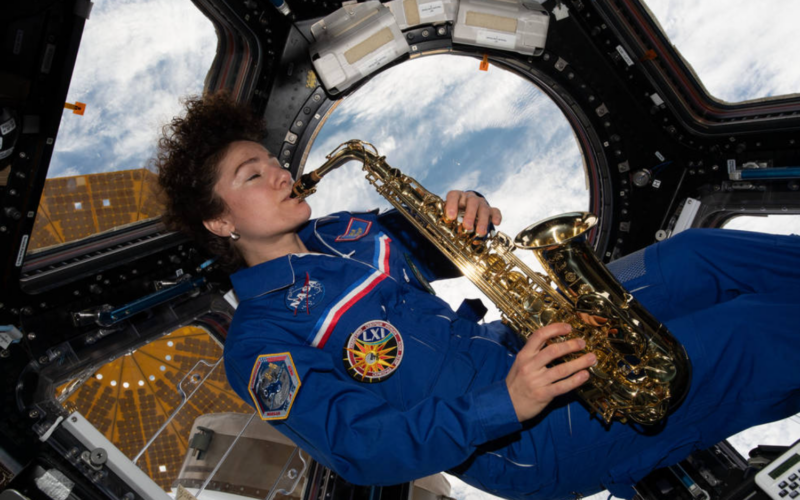One eerie fact about space is that it is a vacuum where sound does not travel. So, it is understandable that in this environment, astronauts would miss the comfort of everyday sounds such as music.
However, music is still an option when orbiting around the Earth in a space station.
From 2001 to 2002, United States astronaut Carl Walz spent 196 days on the International Space Station (ISS). Before he went up, psychological support staff asked Walz what he wanted to bring with him.
“I said, ‘Well, a keyboard would be nice.’ And they said, ‘We’ll look into that,'” Walz told NASA during a post-mission interview on September 4, 2003.
In addition to the keyboard, various other musical instruments have been flown into orbit, including a flute, a guitar, a saxophone, and a didgeridoo.
According to NASA, a surprising number of astronauts are also musicians.
But what happens when they attempt to play music in microgravity?
“Jingle Bells” makes history
From the early days of space exploration, astronauts seem to have been enthusiastic about the prospects of music beyond the Earth’s atmosphere. The first record, a Russian love song, was played in space for Yuri Gagarin through radio transmission on April 12, 1961.
The following year, the first song was sung in space on August 12, 1962, by Ukrainian cosmonaut Pavlo Popovych.
Then, few years later, a harmonica and a set of bells became the first instruments to be sent into space on board United States spaceflight Gemini 6 in December 1965.

Astronauts Walter Schirra and Tom Stafford used the instruments to deliver a festive joke before the spacecraft re-entered Earth’s atmosphere.
“This is Gemini VI. We have an object, that looks like a satellite going from north to south, probably in a polar orbit. He’s in a very low trajectory traveling from north to south and has a very high climbing ratio,” Gemini 6 told ground control. “Looks like he may be going to re-enter pretty soon. Stand by one. You might just let me try to pick up that thing.”
The pair had smuggled the mini set of bells and small harmonica on board as a joke to suggest the astronauts had met Santa Claus on their way back to Earth and used them to deliver a performance of “Jingle Bells”.
As a result, this Christmas anthem became the first song to be performed using musical instruments in outer space.
How to avoid playing a silent tune
The prank also proved that it is possible to make music in space.
Air is present on a spacecraft, meaning that sound waves can still travel. Things only get tricky if the astronauts decide to play music during a spacewalk.
Instruments such as violins and guitars, which rely on the interaction between the strings, need air around them to make the sound. In space, the strings would vibrate but not produce any sound. Brass instruments cannot be used the usual way either. They work by making the air vibrate inside their metal bodies so playing a saxophone outside of a spacecraft would just mean playing a silent tune.
Nevertheless, performing inside the spacecraft also presents a set of challenges.
When Walz was granted his request for a keyboard in 2001, he had to keep himself grounded with foot restraints while playing. He also wrapped a bungee cord around the instrument and his legs to ensure the instrument would stay in place.

In microgravity, the instrument will keep floating if not attached properly, making it not only impossible to play but likely to damage the spacecraft hardware or simply bump someone in the head.
“You don’t need a guitar strap up there, but what was funny was, I’d be playing and then all of a sudden, the pick would go out of my hands. Instead of falling, it would float away, and I’d have to catch it before it got lost,” Walz told NASA.
Similarly, US astronaut Ellen Ochoa said that while she was playing the flute during a mission in 1993, she had her “feet in foot loops”. While the force of air released by a flute is relatively small, in microgravity it would be enough to move Ochoa around the shuttle.
Wooden instruments, such as guitars, are flammable and are only allowed on board if astronauts agree to handle them with care and store the items when not in use. The type of casing also makes a difference, as an electronic musical instrument stored in a metal case will often release less electromagnetic radiation than one stored in plastic.
Jam sessions in a tin can
However, the challenges have not discouraged astronauts from orbital jam sessions, even if guitar smashing is prohibited.
Max Q, a US-based rock band made up exclusively of astronauts, was formed in 1987. The band’s rotating line-up often changed due to flight crew assignments, training, and occasional retirement. In 2013, Chris Hadfield, astronaut and Max Q leader at the time, released a cover of David Bowie’s “Space Oddity”, which was filmed entirely on board the ISS.
“I had to get Bowie’s permission and he said it was the most poignant version ever,” Hadfield told the Guardian in June 2023. “Millions of people have seen my version and it put laughter and joy in the face of David Bowie in the last couple years of his life. So that changed my life.”
The guitar used by Hadfield to record the cover was transported to the station in August 2001 and has since been played by astronauts and cosmonauts. Later, in 2015, Hadfield used the same instrument to make, “Space Sessions: Songs from a Tin Can”, the first album to be recorded in space.
Another band, AstroHawaii, was formed during a space ‘guitar jam’ in 2018. NASA astronauts Drew Feustel and Scott Tingle played guitars, and Ricky Arnold was on the drums. Two Roscosmos cosmonauts Artemyev and Anton Shkaplerov performed on flutes while the crew’s sixth member Japanese astronaut, Norishige Kanai, was likely to have been behind the camera recording the performance.
According to a research paper titled “The psychological functions of music listening”, one of the most significant roles of music is to produce a sense of cohesion or social togetherness.
“Recognizably musical activities appear to have been present in every known culture on earth, with ancient roots extending back 250,000 years or more,” the research paper, which was published in 2013, stated.
The connection keeping astronauts grounded
Safety is a top priority on board the ISS. So, the fact that astronauts are allowed to play instruments while on board spacecraft highlights the importance of music in their surroundings.
According to the European Space Agency (ESA), stress factors in space can cause sleep disruption, altered time perception and spatial orientation, while engaging with music has a remarkable ability to stimulate the release of several beneficial hormones related to positive, uplifting feelings.
“It’s a link to home,” Walz said. “We all know we’re going back to Earth. We know we’re going back to that life.”
In 2018, the prototype of a musical instrument specifically designed for a microgravity environment called the Telemetron was unveiled. To play this instrument, astronauts just let it tumble around in midair rather than plucking strings or blowing into a reed.
The idea, according to its inventors, is to “expand expression beyond the limits of earth-based instruments and performers” and “explore how design and creativity might evolve as we begin to do more than merely survive in space.”

However, it has not yet been deployed to space. Perhaps this could be because the instrument is designed specifically for space and not familiar enough for astronauts looking to be reminded of home.
Walz described the qualities of music to recreate a place like home during his post-mission interview in 2003:
“The strangest thing about playing music in space is that it’s not strange,” he said. “In most homes, there’s a musical instrument or two. And I think it’s fitting that in a home in space, you have musical instruments as well. It’s natural. Music makes it seem less like a spaceship, and more like a home.”

